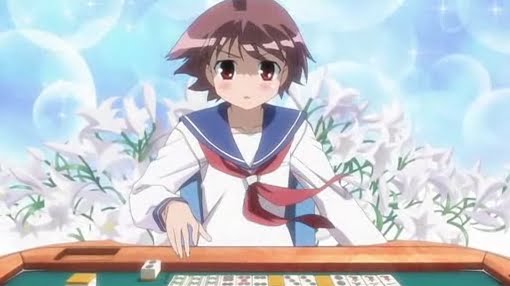I think at least two major reasons exist.
More inflation in scoring
Dora, or lucky tile is of course most popular, especially red 5 tiles and "kandora" or doras added by some player's making a kong.
Making a kong increases at least another four doras, and four uradoras given only for riichi-declared winner.
Since your name is not Saki, I seldom recommend you to make a kong because you cannot always win with your added dora but help other players with bonus dora.
There may be extra award called "tip" for the winner who wins with red dora, uradora or ippatsu.
You may notice special terms including "yakitori" which Fukabori Sumiyo murmurs after her play.
Yakitori, "barbecued chicken," means "to conclude a game with no winning hand."
Yakitori player will be charged some penalty, usually 10000 points, if the game admits yakitori rule.
Imagine you are the master of a mahjong parlor.
The faster game ends, the more you can earn the fare of another game.
Therefore each mahjong parlor has their house rules.
Example:
*Dealer cannot be continued without winning
In standard rule if you are a dealer, you can continue to be a dealer if you secure a ready hand and no win.
*Even the fourth player who calls riich, the round continues.
Originally when there are three players and each of them call riichi, the round will be draw if the fourth call riichii,
...so that before playing you have to consult other players about the rules hired by them.
"Ari-ari" rule is most popular. In another words, DO NOT PLAY WITH THEM if you cannot understand any part of their rules explained by them.









